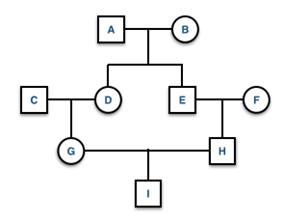#Question id: 8704
#Unit 9. Diversity of Life Forms
To apply the principle of maximum parsimony to construction of a phylogenetic tree, ________.
#Question id: 8705
#Unit 9. Diversity of Life Forms
If you were using cladistics to build a phylogenetic tree of cats, which of the following would be the best outgroup?
#Question id: 8708
#Unit 9. Diversity of Life Forms
Concerning growth in genome size over evolutionary time, which of these is least associated with the others?
#Question id: 8710
#Unit 9. Diversity of Life Forms
A phylogenetic tree constructed using sequence differences in mitochondrial DNA would be most valid for discerning the evolutionary relatedness of ________.
#Question id: 8716
#Unit 9. Diversity of Life Forms
The most important feature that permits a gene to act as a molecular clock is ________.
#Question id: 8717
#Unit 9. Diversity of Life Forms
Molecular clocks are more reliable when ________.

